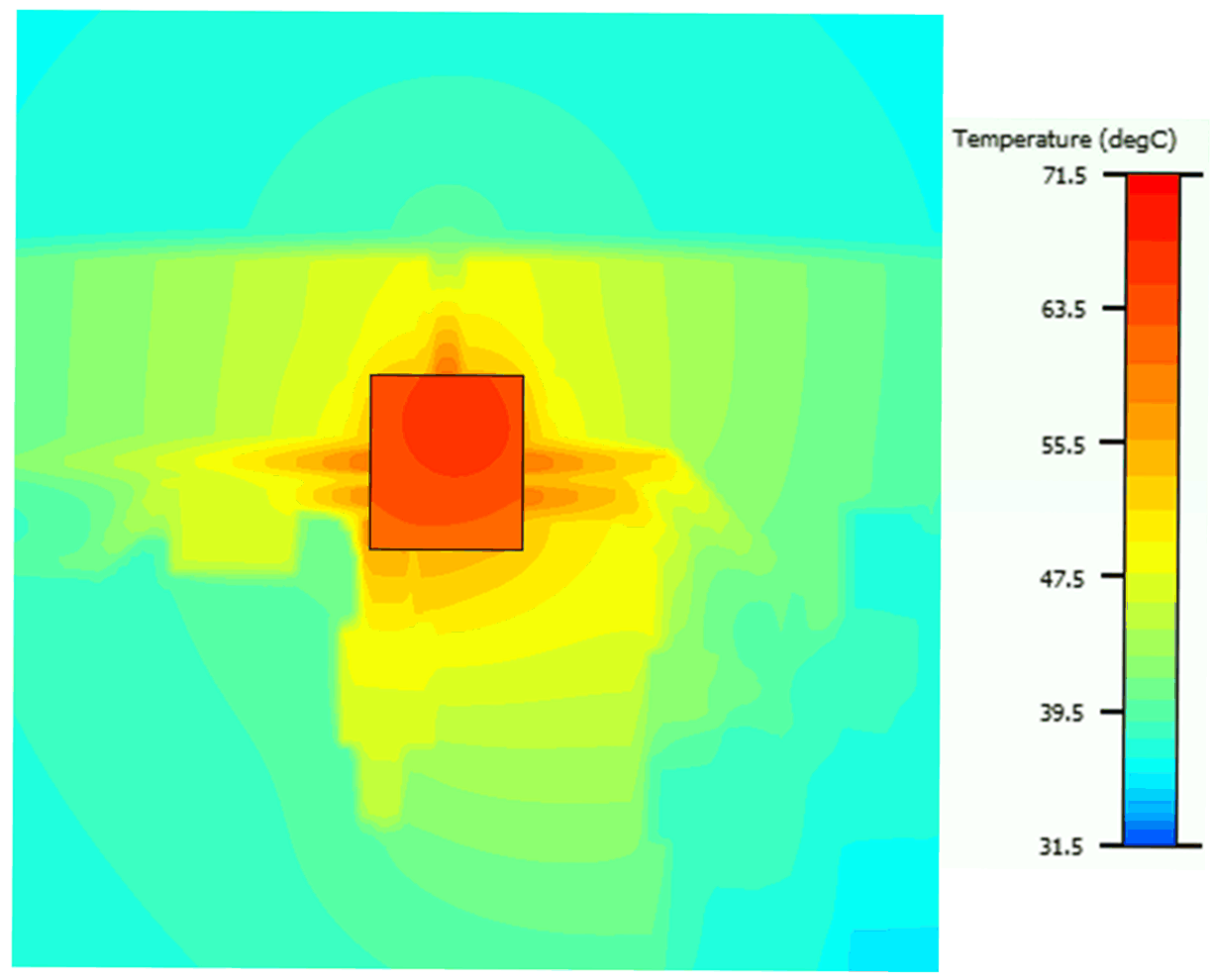JAJSI66A November 2019 – March 2020 TPS7A54
PRODUCTION DATA.
- 1 特長
- 2 アプリケーション
- 3 概要
- 4 改訂履歴
- 5 概要(続き)
- 6 Pin Configuration and Functions
- 7 Specifications
- 8 Detailed Description
-
9 Application and Implementation
- 9.1
Application Information
- 9.1.1 Recommended Capacitor Types
- 9.1.2 Soft Start and Inrush Current
- 9.1.3 Optimizing Noise and PSRR
- 9.1.4 Charge Pump Noise
- 9.1.5 Current Sharing
- 9.1.6 Adjustable Operation
- 9.1.7 Power-Good Operation
- 9.1.8 Undervoltage Lockout (UVLO) Operation
- 9.1.9 Dropout Voltage (VDO)
- 9.1.10 Device Behavior During Transition From Dropout Into Regulation
- 9.1.11 Load Transient Response
- 9.1.12 Reverse Current Protection Considerations
- 9.1.13 Power Dissipation (PD)
- 9.1.14 Estimating Junction Temperature
- 9.1.15 TPS7A54EVM Thermal Analysis
- 9.2 Typical Application
- 9.1
Application Information
- 10Power Supply Recommendations
- 11Layout
- 12デバイスおよびドキュメントのサポート
- 13メカニカル、パッケージ、および注文情報
9.1.15 TPS7A54EVM Thermal Analysis
The TPS7A54EVM is used to develop the TPS7A5401RPS thermal model. The RPS package is a 2.2-mm × 2.5-mm, 12-pin VQFN with 25-µm plating on each via. The EVM is a 3-inch × 3-inch (7.62 mm × 7.62 mm) PCB comprised of four layers. Table 6 lists the layer stackup for the EVM. Figure 48 to Figure 52 illustrate the various layer details for the EVM.
Table 6. Stackup
| LAYER | NAME | MATERIAL | THICKNESS (mil) |
|---|---|---|---|
| 1 | Top overlay | — | — |
| 2 | Top solder | Solder resist | 0.4 |
| 3 | Top layer | Copper | 1.4 |
| 4 | Dielectric 1 | FR-4 high Tg | 18.5 |
| 5 | Mid layer 1 | Copper | 1.4 |
| 6 | Dielectric 2 | FR-4 high Tg | 18.6 |
| 7 | Mid layer 2 | Copper | 1.4 |
| 8 | Dielectric 3 | FR-4 high Tg | 18.5 |
| 9 | Bottom layer | Copper | 1.4 |
| 10 | Bottom solder | Solder resist | 0.4 |
Figure 48. Top Composite View
Figure 50. Mid Layer 1 Routing
Figure 52. Bottom Layer Routing
Figure 49. Top Layer Routing
Figure 51. Mid Layer 2 Routing
Figure 53 shows the thermal gradient on the PCB that results when a 1-W power dissipation is used through the PassFET with a 25°C ambient temperature.
 Figure 53. PCB Thermal Gradient
Figure 53. PCB Thermal Gradient For additional information on the PCB, see the TPS7A54EVM user guide.